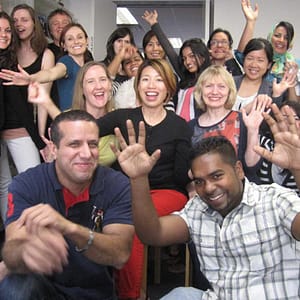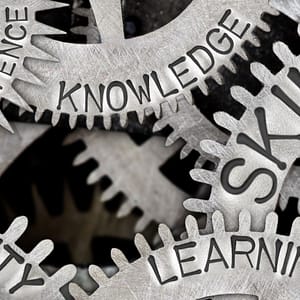Why Women-Owned Is Good for Business
Over the past decade, women-led companies have grown five times faster than the national average. Today, they account for 42% of all businesses in the U.S. (nearly 13 million), employ 9.4 million workers, and generate $1.9 trillion in revenue.1
In this article, we take a look at women-owned businesses: their challenges and successes, along with the role they stand to play in our country’s post-COVID recovery.
The Economics of Gender Equality
There is plenty of data to illustrate how women-owned businesses and companies with a high percentage of women in leadership roles perform better than the national average–often by significant margins.
International banking group BNP Paribas analyzed 2,600 entrepreneurs in 18 countries, including the U.S. The study found that companies run by women generated 13% higher revenues than men.2
Data also show that women-owned businesses tend to be good investments. In a study of over 350 startups, Boston Consulting Group (BCG) and the global startup accelerator MassChallenge revealed that businesses founded by women produce higher revenue, over two times more per dollar invested than companies founded by men. BCG derived that if women and men participate equally as entrepreneurs around the world, the global GDP could see a rise of 3-5%, giving the global economy a boost of $2.5-5 trillion.3
The numbers make it clear that women-owned businesses are a significant economic force. Moreover, this advantage comes in spite of significant obstacles.
The Funding Gap
Despite their track record for delivering higher average ROI than male-led businesses, startups founded or co-founded by women receive less investment money. In MassChallenge’s review of investment and revenue data, companies founded by women receive less than half the average level of investment as companies founded by men.
BCG cites some of the key reasons as to why:
- Pitches given by male founders are more likely to include bold projections and assumptions, whereas women tend to be more conservative in their presentations.
- Presentations given by women are more subject to challenges and pushback.
- Male investors often have less familiarity with the types of products and services that women-founded companies market to women.
In BPG’s five-year review of investment and revenue data, investments in female-founded or cofounded companies averaged $935,000. This is less than half the average $2.1 million invested in businesses founded by male entrepreneurs. However, even in the face of this disparity, female startups performed better, generating 10% more in cumulative revenue over a five-year period.
There’s also disparity in lending. A study by Fundera, an online loan aggregator, found that female entrepreneurs ask for less, receive less, and pay more for small-business financing. Women are slightly less likely to be approved for loans (32% of women business owners are approved, as compared to 35% of male entrepreneurs). Those women who do secure financing are more likely to receive shorter-term loans with less capital and significantly higher interest rates.4
Funding disparities have a far-reaching impact. Without the same ability to obtain funding, women are more likely to self-finance their companies with help from friends and family, personal savings, or even credit cards. Consequently, only 2% of women-owned businesses break the $1 million revenue mark.
Let's Chat!
Get in touch to speak with a member of our team.
How Women-Owned Businesses Can Impact Post-COVID Recovery
Women-owned businesses have never had an easy road, but now coronavirus has upended the business environment in unprecedented ways. In April 2020, WEConnect International surveyed nearly 600 women-owned businesses about the impact of COVID-19. Over 85% of respondents reported being negatively impacted, and 90% saw a decrease in sales.
The economic hardship is by no means limited to women-owned businesses. All companies (male- and female-led) have been forced to quickly accommodate fully remote workforces, and to offer flexibility to staff. Many have needed to swiftly pivot in new directions, refocus priorities, and find new ways to stay relevant and viable. But as we figure out how to move forward in the post-COVID landscape, there is optimism that women-owned businesses are poised to play a significant role in our recovery. For precedence, we can look at the role women played in stabilizing the post-2008 economy.
Advisory firm Cornerstone Capital Group released a paper exploring the ways female entrepreneurs contributed to the economic recovery that occurred after the 2008 recession. They also examined how the U.S. can realize similar benefits as we restart the economy post-COVID. Between 2007 and 2012, minority- and women-owned businesses added 1.8 million jobs in the U.S. Comparatively, companies owned by white males lost 800,000 jobs, and firms owned equally by white men and women lost another 1.6 million jobs during this time period.
This disparity can be credited in part to the types of industries impacted in 2008, such as manufacturing and construction, which have a high percentage of white male owners. Meanwhile, the recovery was driven by growth in areas such as health care and food services, which have higher minority and women ownership.5
The numbers illustrate how essential women-owned businesses were to our economic recovery in 2008. Today, the business landscape is again facing enormous challenges. Women-owned businesses have the potential to become a major force in our economic recovery.
Hopefully they will also serve as a leading driver of social change.
Driving Social Change
In recent months, racial equity has joined coronavirus at the center of our national dialogue, forcing businesses to take a hard look at inclusion and equality within their own institutions. As companies move forward into the next decade, racial equity will be one of the most significant and meaningful issues organizations will need to address.
It has yet to be seen how companies will fully respond and create change. But we are hopeful that women will take a driver’s seat in figuring out how to conduct business with empathy while addressing racial inequalities.
Improving the world is a significant goal for many women. PricewaterhouseCoopers conducted a study in which both women and men were asked to name the most important factor in choosing a future career. Of the men surveyed, 31% reported the most important factor was “feeling like the work I do makes the world a better place/has a wider impact.” Among females, this number grew to 50%. In fact, women rate the opportunity to make the world a better place as the second most attractive attribute of a career—only “having interesting work” ranked higher.6
Featured Services
Learn more about…
Eriksen Translations — Woman-Owned and Operated
In 1986, Eriksen Translations was founded by Vigdis Eriksen, and we remain 100% woman owned and operated today. Our owner has always recognized the importance of engaging in a community of women business owners—to both support and learn from her peers. Eriksen Translations is a certified woman-owned business and has long been active in the Women Presidents’ Educational Organization, the benefits of which have been multi-fold.
Women-owned businesses have the grit, adaptability, and resourcefulness to flourish despite significant obstacles. They have been shown to create jobs in a post-recession environment. Now, in a time of colossal upheaval, we hope that women-owned businesses will receive the capital and the resources they need to take a leading role in our economic recovery, and help us build a more open, diverse, and inclusive society.
 Named to the 2024 Inc. 5000 list of fastest-growing companies and ranked among the world’s top 100 language service providers by CSA Research
Named to the 2024 Inc. 5000 list of fastest-growing companies and ranked among the world’s top 100 language service providers by CSA Research

